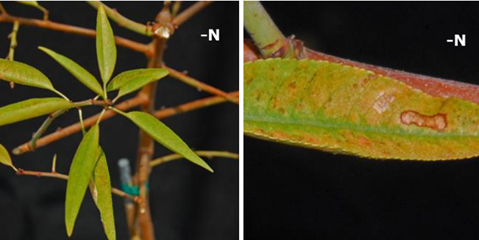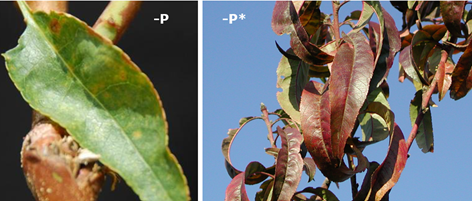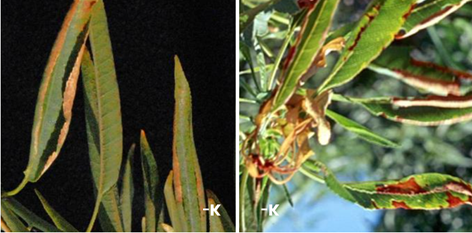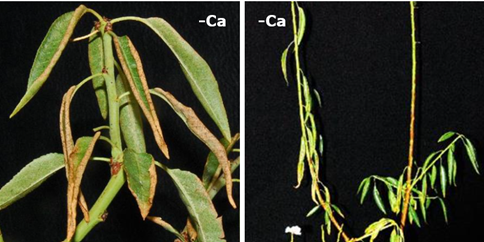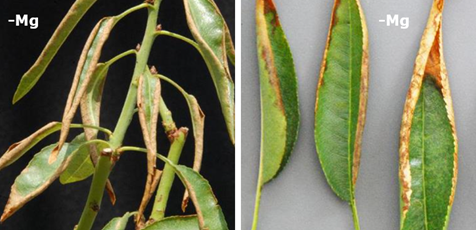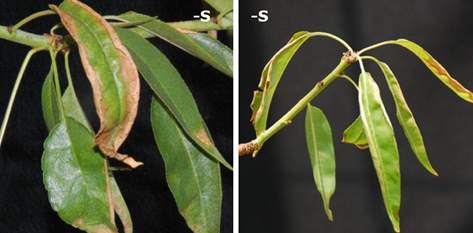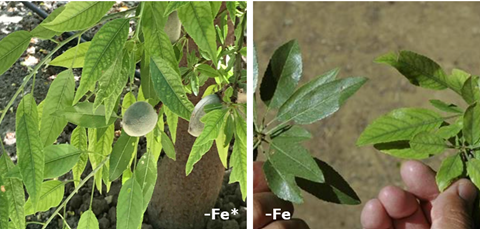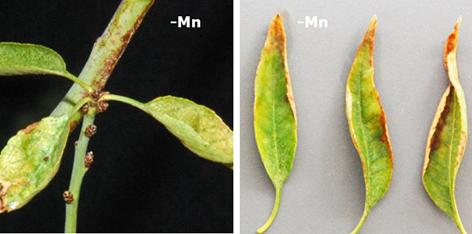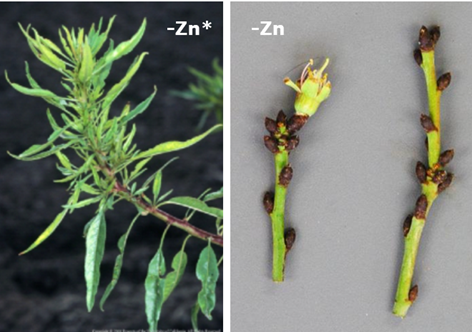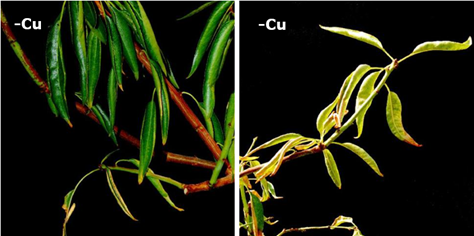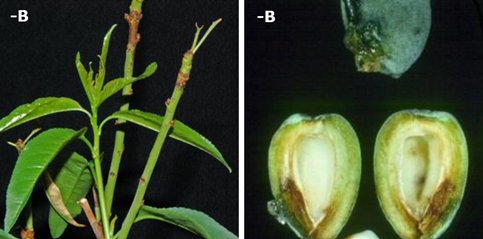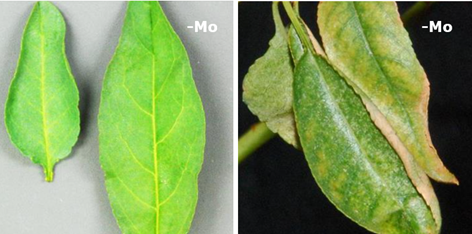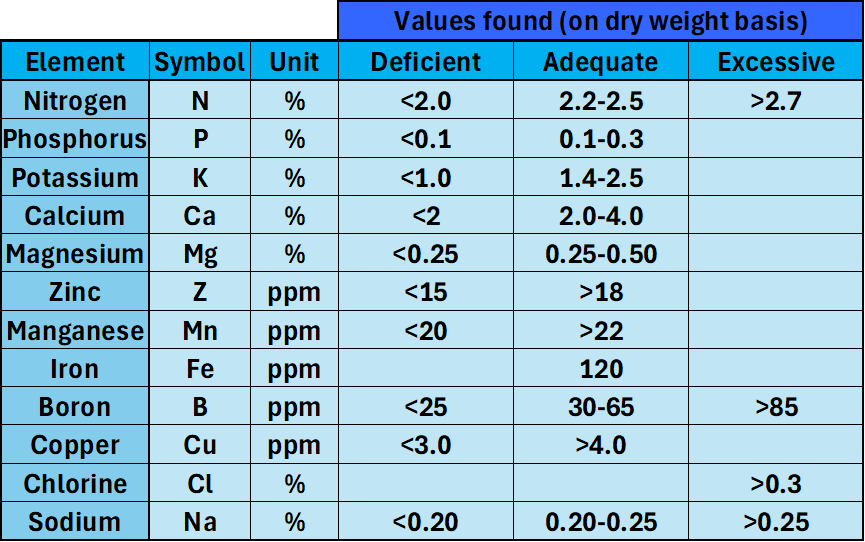
Function and Importance of Macronutrients and Micronutrients in Almond Orchards
Macronutrients (see Table 9)
Macronutrients are essential elements required in relatively large quantities by plants for growth and development.
Nitrogen (N)
Nitrogen (N) The Keystone Nutrient for Almond Trees: Nitrogen is a cornerstone nutrient for almond tree health and productivity. As a key component of chlorophyll and proteins, it drives photosynthesis, growth, and fruit development. The early growth stages, characterized by vegetative development and fruit set, demand significant nitrogen input to build the framework for the following season’s crop. Post-harvest, nitrogen supports carbohydrate storage in roots and branches, crucial for bud formation and differentiation. To optimize nitrogen utilization, foliar applications at pit hardening can enhance bud development and ensure uniform flowering.
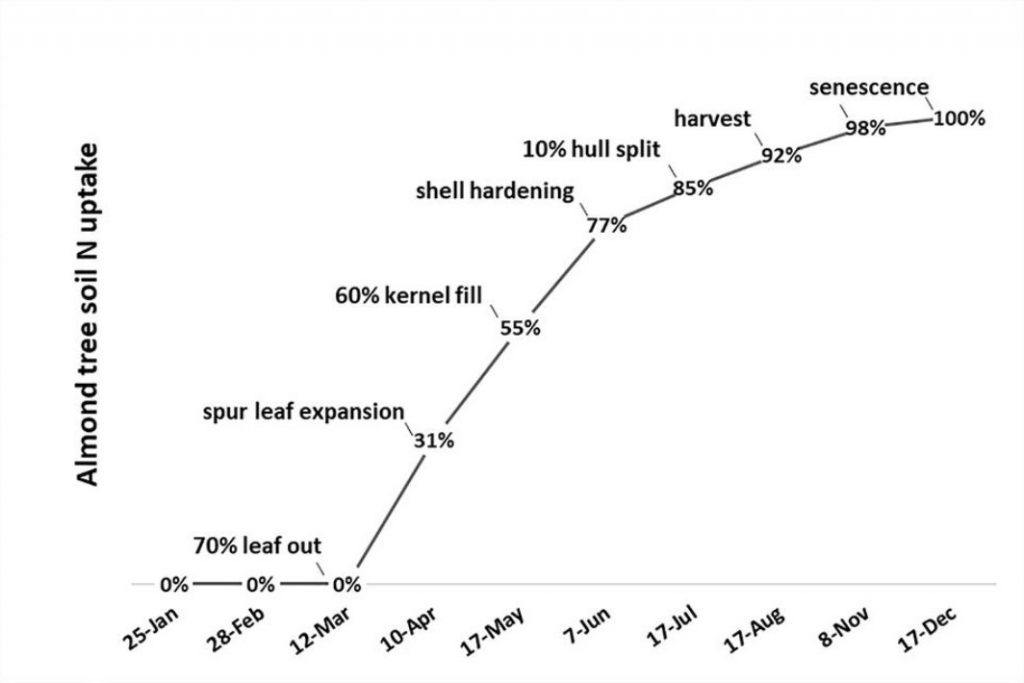
Fig. 3. Percentage of almond tree nitrogen uptake at different stages of crop phenological development in a 9-year-old orchard located in Kern County, CA.
Adopted from Muhammad et al. 2020.
Symptoms of N Deficiency (see pic. 1) and Potential Consequences:
- Reduced growth: Trees experience stunted growth with smaller, pale green leaves.
- Delayed bloom and fruit set: Nitrogen deficiency can delay flowering and reduce fruit set, ultimately impacting yield.
- Lower nut quality: Nitrogen is essential for kernel development and oil content. Deficient trees produce smaller, lower-quality nuts.
- Premature leaf drop: Severely nitrogen-deficient trees may prematurely shed leaves, impacting overall tree health.
Pic.1 Nitrogen deficiency symptoms in Almond.
Phosphorus (P):
Vital Nutrient for Almond Trees: Phosphorus plays a critical role in numerous plant processes, including cell division, energy transfer, and photosynthesis. It is particularly important for early growth stages, such as shoot and root development, as well as flowering and fruit set. Optimal phosphorus availability is essential in the weeks leading up to bud break and throughout the bloom and fruit development periods. Phosphorus deficiency results in stunted growth, purple coloration of leaves, and reduced yields.
Phosphorus deficiency in almond trees, while less common than nitrogen or potassium deficiencies, can still significantly impact tree health and productivity.
Symptoms of P Deficiency (see pic. 2) and Potential Consequences
- Stunted growth: Trees exhibit reduced growth rates in both shoots and roots.
- Delayed maturity: Flowering and fruit development may be delayed or reduced.
- Purple coloration: Leaves may develop a purplish tint, particularly on older leaves.
- Reduced fruit size and quality: Phosphorus is essential for fruit development, and deficiency can lead to smaller, lower-quality almonds.
It’s important to note that phosphorus deficiency symptoms can be subtle and often mimic those of other nutrient deficiencies. Soil testing and plant tissue analysis are essential for accurate diagnosis.
Pic.2 Phosphorus deficiency symptoms in Almond.
Potassium (K)
The Essential Nutrient for Almond Tree Health: Potassium plays a pivotal role in almond tree growth and development. It is involved in vital functions such as photosynthesis, enzyme activation, protein synthesis, and carbohydrate transportation. Additionally, potassium helps maintain optimal water balance within plant cells.
Sufficient potassium levels are crucial for increasing almond yields, while deficiencies can lead to poor kernel fill and reduced oil content. Foliar potassium applications, particularly using potassium nitrate, have demonstrated benefits in improving and synchronizing flowering across different varieties.
Potassium, in conjunction with nitrogen, supports tree growth and enhances water utilization. It is essential in large amounts for nut development and achieving high yields. Both calcium and potassium contribute to improved nut fill and disease resistance, helping to minimize moulds and storage rot.
The US Department of Agriculture reports that almond kernels contain 0.75% potassium, while potassium constitutes over 2% of the dry weight of almond hulls (Calixto, 1982). Almond trees absorb potassium and nitrogen in the highest quantities among soil-derived nutrients. During harvest, the removal of almond hulls and kernels leads to a significant loss of potassium from the orchards. To prevent depletion, it is important to regularly supply potassium to the trees throughout the growing season.
Symptoms of K Deficiency (see pic. 3) and Potential Consequences
- Leaf Symptoms: Potassium deficiency often manifests as leaf scorch, beginning at the leaf margins and progressing inward. The leaf tips may also curl upward, resembling a “spoon” shape.
- Reduced Growth: Potassium is essential for cell division and elongation, so deficiency can lead to stunted growth and reduced shoot and root development.
- Decreased Yield: Potassium plays a vital role in fruit set and development. Insufficient potassium levels can result in lower yields, smaller nuts, and reduced kernel fill.
- Increased Susceptibility to Stress, Pests and Diseases: Potassium helps regulate water balance and stress tolerance. Deficient trees may be more susceptible to drought, frost, and increased susceptibility to pests and diseases.
Pic.3 Potassium deficiency symptoms in Almond.
Calcium (Ca)
The building bricks of the cell wall: Calcium is essential for optimal plant growth and development. It plays a critical role in cell wall structure and function, contributing to cell division, elongation, and membrane permeability. Also, it is vital for fruit development and quality, and preventing physiological disorders. Beyond its role in plant tissues, calcium also improves soil health by enhancing soil structure, cation exchange capacity, and microbial activity.
Symptoms of Ca Deficiency (see pic. 4) and Potential Consequences:
- Reduced Growth: Calcium is essential for cell wall development, so deficiency can result in stunted growth and reduced shoot and root development.
- Increased Susceptibility to Disease: Calcium plays a role in plant defence mechanisms. Insufficient calcium levels can make almond trees more vulnerable to fungal diseases and pests.
- Fruit Disorders: Calcium deficiency is often linked to bitter pit, a physiological disorder that reduces fruit quality and marketability.
- Reduced Yield: Overall tree vigour and productivity can be compromised due to calcium deficiency.
Pic.4 Calcium deficiency symptoms in Almond.
Magnesium (Mg)
The building bricks of the cell wall: Calcium is essential for optimal plant growth and development. It plays a critical role in cell wall structure and function, contributing to cell division, elongation, and membrane permeability. Also, it is vital for fruit development and quality, and preventing physiological disorders. Beyond its role in plant tissues, calcium also improves soil health by enhancing soil structure, cation exchange capacity, and microbial activity.
Symptoms of Mg Deficiency (see pic. 5) and Potential Consequences:
- Chlorosis: Interveinal chlorosis, where the leaf tissue between the veins turns yellow while the veins remain green, is the most common symptom.
- Reduced Growth: Magnesium is vital for chlorophyll production, and its deficiency can lead to stunted growth and reduced leaf size.
- Premature Leaf Drop: Severely deficient trees may prematurely shed leaves, impacting overall tree health and productivity.
- Reduced Yield and Quality: Magnesium is involved in fruit development and oil content, so deficiency can result in lower yields and reduced nut quality.
- Increased Susceptibility to Stress: Magnesium plays a role in stress tolerance, and deficient trees may be more susceptible to environmental stresses like drought or disease.
Pic.5 Magnesium deficiency symptoms in Almond.
Sulphur(S)
Component of amino acids and proteins, essential for chlorophyll formation.
Symptoms of S Deficiency (see pic. 6) and Potential Consequences:
- Chlorosis: Like nitrogen deficiency, sulphur deficiency causes a general yellowing of leaves both young and mature. However, unlike nitrogen deficiency, the entire leaf yellow uniformly, without green veins in mature leaves.
- Reduced Growth: Sulphur is involved in cell division and elongation, so deficiency can lead to stunted growth and reduced shoot and leaf size.
- Poor Fruit Development: Sulphur is essential for fruit set and development. Deficiency can result in reduced fruit size and quality.quality.
Sulphur deficiency causes poor branching, with both young and mature leaves displaying uniform chlorosis. The leaf margins become necrotic and curl longitudinally, resulting in a wilted, drooping appearance.
Pic.6 Sulphur deficiency symptoms in Almond.
Micronutrients (see Table 9)
Micronutrients are required in smaller amounts but are equally essential for plant growth and development.
Iron (Fe):
Essential for Chlorophyll and Plant Processes: Iron plays a critical role in plant metabolism, serving as a key component of chlorophyll, the molecule responsible for photosynthesis. Additionally, iron is involved in respiration, protein synthesis, and energy production.
However, iron availability is significantly reduced in calcareous soils due to high pH levels and the presence of carbonates. These conditions promote the formation of insoluble iron compounds, limiting the plant’s ability to absorb this essential nutrient. As a result, iron chlorosis, characterized by yellowing of leaf tissue while veins remain green, is a common problem in almonds grown on calcareous soils.
Symptoms of Fe Deficiency (see pic. 7) and Potential Consequences:
- Interveinal Chlorosis: The most characteristic symptom is yellowing of the leaf tissue between the veins, while the veins themselves remain green.
- Reduced Growth: Iron is essential for chlorophyll production, which is crucial for photosynthesis. Consequently, iron-deficient trees exhibit stunted growth and reduced leaf size.
- Reduced Yield: Iron deficiency can impair fruit set, development, and ultimately, yield.
- Increased Susceptibility to Pests and Diseases: Iron-deficient trees may be more vulnerable to attacks from pests and diseases due to weakened plant health.
Management Strategies: To address iron deficiency, several strategies can be employed:
- Soil Amendments: Applying acidifying agents like sulphur or iron chelates can help improve iron availability in the soil.
- Foliar Fertilization: Direct application of iron-containing foliar sprays can provide a quick response to iron deficiency.
- Rootstocks: Selecting iron-efficient rootstocks can help mitigate the problem.
- Irrigation Management: Proper irrigation can influence iron availability in the soil.
Pic.7 Iron deficiency symptoms in Almond; *Source.
Sulphur deficiency causes poor branching, with both young and mature leaves displaying uniform chlorosis. The leaf margins become necrotic and curl longitudinally, resulting in a wilted, drooping appearance.
Pic.6 Sulphur deficiency symptoms in Almond.
Manganese (Mn):
Manganese is a vital micronutrient that plays a crucial role in several key plant processes. It acts as an activator for enzymes involved in photosynthesis, respiration, and nitrogen metabolism. Additionally, manganese is essential for chlorophyll formation and the prevention of oxidative stress.
Symptoms of Mn Deficiency (see pic. 8) and Potential Consequences:
A deficiency in manganese can significantly impact almond tree health
and yield. Common symptoms of manganese deficiency include:
- Interveinal chlorosis: Similar to iron deficiency, but often with a darker green vein than iron chlorosis.
- Reduced growth: Manganese is involved in plant growth processes, and deficiency can lead to stunted growth.
- Leaf spots and necrosis: In severe cases, leaf spots and tissue death may occur.
- Reduced yield and fruit quality: Manganese is important for fruit development and quality, and deficiency can lead to lower yields and smaller, lower-quality almonds.
Pic.8 Manganese deficiency symptoms in Almond
Zinc (Zn)
Zinc is an essential micronutrient that plays a pivotal role in various plant processes, including protein synthesis, carbohydrate metabolism, and hormone production. It is particularly crucial for enzyme activity and maintaining the integrity of cell membranes.
In almond trees, zinc deficiency is a common issue, often manifesting as “little leaf” syndrome, characterized by small, narrow leaves and shortened internodes. This condition can significantly impact tree growth, yield, and fruit quality.
Zinc deficiency is exacerbated in calcareous soils due to the formation of insoluble zinc compounds, limiting plant availability. To effectively manage zinc nutrition in almonds, regular soil and leaf tissue testing, combined with targeted zinc applications, is essential.
Manganese is a vital micronutrient that plays a crucial role in several key plant processes. It acts as an activator for enzymes involved in photosynthesis, respiration, and nitrogen metabolism. Additionally, manganese is essential for chlorophyll formation and the prevention of oxidative stress.
Symptoms of Zn Deficiency (see pic. 9) and Potential Consequences:
Zinc is a critical micronutrient essential for numerous physiological processes in almond trees. When zinc is deficient, several adverse effects manifest:
- Little Leaf Disease: This is the most characteristic symptom, where leaves become abnormally small, narrow, and often puckered.
- Reduced Shoot Growth: Zinc is vital for cell division and elongation, leading to shortened internodes and overall stunted growth in deficient trees.
- Reduced Fruit Set and Yield: Zinc plays a role in pollen development and fruit set, and deficiency can result in lower fruit numbers and smaller nuts.
- Delayed Maturity: Fruit maturity can be delayed in zinc-deficient trees, impacting harvest timing and overall orchard management.
Pic.9 Zinc deficiency symptoms in Almond; *Source.
Copper (Cu):
Copper is a vital micronutrient involved in numerous physiological processes within almond trees. It plays a crucial role in chlorophyll production, photosynthesis, enzyme function, and water transport. Additionally, copper is instrumental in strengthening plant tissues through lignification.
Symptoms of Cu Deficiency (see pic. 10) and Potential Consequences:
- Leaf abnormalities: Leaves exhibit pale colour, necrotic margins, and often curl longitudinally.
- Dieback: Severe deficiency can lead to the death of terminal shoots, followed by increased branching below the affected area.
- Reduced yield and quality: Copper is essential for fruit development and quality. Deficiency can result in lower yields and reduced nut size and fill.
- Increased susceptibility to stress: Copper deficiency weakens the plant, making it more vulnerable to diseases and pests.
Factors Affecting Copper Availability:
- Soil Type: Sandy and alkaline soils are particularly susceptible to copper deficiency due to low organic matter content and high pH levels.
- Irrigation: Excessive irrigation can leach copper from the soil profile.
Pic.10 Copper deficiency symptoms in Almond.
Boron (B):
Copper is a vital micronutrient involved in numerous physiological processes within almond trees. It plays a crucial role in chlorophyll production, photosynthesis, enzyme function, and water transport. Additionally, copper is instrumental in strengthening plant tissues through lignification.
Symptoms of B Deficiency (see pic. 11) and Potential Consequences:
- Reduced Fruit Set: Boron deficiency is most notably associated with poor fruit set due to its critical role in pollen tube growth.
- Cracked Nuts: Insufficient boron can lead to cracked nuts, reducing fruit quality and marketability.
- Growth Impairment: Boron deficiency can also result in reduced shoot growth and overall tree vigour.
Factors Affecting Copper Availability:
- Soil Type: Sandy soils and soils with low organic matter content are more prone to boron deficiency.
- pH: High soil pH can reduce boron availability.
- Irrigation: Excessive irrigation can leach boron from the soil profile.
Pic.11 Boron deficiency symptoms in Almond.
Molybdenum (Mo):
Molybdenum, while required in minute quantities, is an essential micronutrient for almond trees. It plays a crucial role in nitrogen metabolism, specifically in the reduction of nitrates to ammonium, a form of nitrogen readily available for plant uptaken
Symptoms of Mo Deficiency (see pic. 12) and Potential Consequences:
- Nitrogen Deficiency-Like Symptoms: Since molybdenum is involved in nitrogen metabolism, deficiency symptoms can mimic those of nitrogen deficiency, including chlorosis (yellowing of leaves) and reduced growth.
- Reduced Yield: Molybdenum is essential for enzyme systems involved in photosynthesis and respiration, and deficiency can lead to reduced yield and fruit quality.
- Increased Susceptibility to Disease: Molybdenum plays a role in plant defence mechanisms, and deficiency can increase susceptibility to certain diseases.
Pic.12 Molybdenum deficiency symptoms in Almond.
Chlorine (Cl):
Chlorine, while often overlooked, is a micronutrient essential for optimal plant health and productivity. It plays a crucial role in several physiological processes, including:
- Photosynthesis: Chlorine is involved in the oxygen-evolving complex, essential for the light-dependent reactions of photosynthesis.
- Osmotic Regulation: Chlorine helps maintain plant water balance by influencing stomatal function.
- Ion Balance: Chlorine contributes to the overall ionic balance within plant cells.
Symptoms of Cl Deficiency (no picture is available) and Potential Consequences: Although rare, chlorine deficiency can manifest in several ways:
- Reduced Growth: A lack of chlorine can inhibit plant growth and development.
- Wilting: Impaired water balance due to chlorine deficiency can lead to wilting, especially under drought conditions.
- Chlorosis: While less common than with other micronutrients, severe chlorine deficiency can result in chlorosis (yellowing of leaves).
Table 9: nutrients levels and their interpretation for almond trees


